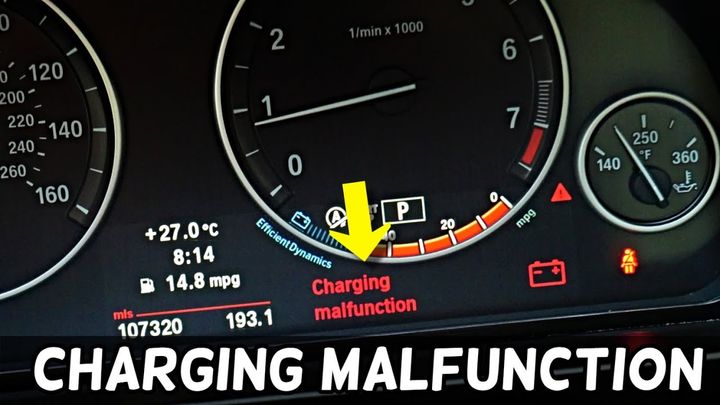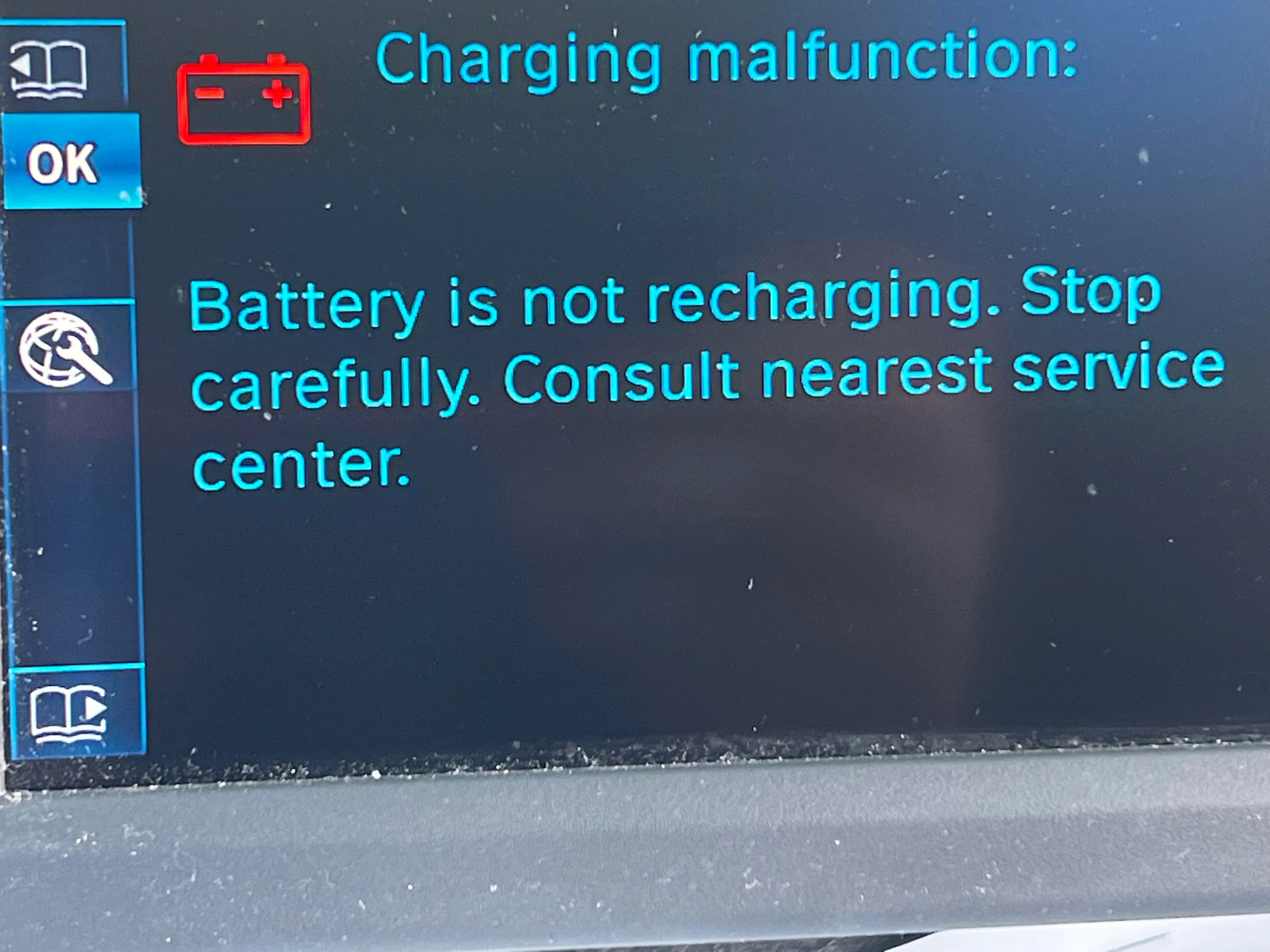


A charging system malfunction in your BMW can leave you stranded with a dead battery. This guide provides a comprehensive overview of the charging system components, diagnostic procedures, and repair methods to help you identify and resolve common issues.

The charging system is a critical component that ensures your BMW's electrical components function seamlessly. It consists of the alternator, battery, voltage regulator, and an intricate network of wiring and connections. Let's explore the key components:
| Component | Function |
|---|---|
| Alternator | Generates electricity to power electrical systems and charge the battery |
| Battery | Stores electrical energy and provides backup power |
| Voltage Regulator | Maintains optimal voltage levels for charging and electrical components |
| Wiring and Connections | Distributes electrical power throughout the vehicle |
The alternator converts mechanical energy from the engine into electrical energy, while the battery acts as a storage unit for this energy. The voltage regulator ensures the alternator's output voltage is within the optimal range, preventing overcharging or undercharging of the battery.
Identifying the root cause of a charging system malfunction is crucial for effective repair. Here are the key diagnostic steps:
Evaluate the alternator's performance by testing its output voltage and current.
| Test | Description | Normal Range |
|---|---|---|
| Voltage Testing | Measure alternator output voltage with engine running | 13.8 - 14.8 volts |
| Current Output Testing | Measure alternator's ability to supply sufficient current | Varies based on electrical load |
A faulty battery can contribute to charging system issues. Inspect the battery's condition and perform load testing.
| Test | Description |
|---|---|
| Load Testing | Evaluates the battery's ability to hold a charge and deliver power |
| Age and Condition | Check for signs of degradation, electrolyte levels, and physical damage |
Loose or corroded wiring and connections can impede the flow of electricity, leading to charging issues.
Resistance Testing: Measure electrical resistance to identify loose connections or damaged wiring.
Visual Inspection: Look for signs of corrosion, fraying, or physical damage.
Once the root cause is identified, the necessary repairs can be undertaken.
If the alternator is faulty, follow these steps:
Disconnect the battery and remove the old alternator.
Install the new alternator, ensuring proper belt tensioning and wiring connections.
If the battery is defective or has reached the end of its service life, replace it by:
Disconnecting the negative terminal first, then the positive terminal.
Connecting the positive terminal first on the new battery, then the negative terminal.
Address wiring and connection issues by:
Replacing damaged wiring with appropriate gauge and insulation.
Cleaning corroded battery terminals, alternator connections, and ground straps.
Tightening loose connections to ensure proper contact.
Other factors that can contribute to charging system malfunctions include:
Voltage Regulator Replacement: Replace a faulty voltage regulator to ensure proper voltage regulation.
Electrical Shorts and Loads: Diagnose and resolve excessive electrical loads or shorts in the system.
Software Updates: Perform software updates to address control module issues or compatibility problems.
Control Module Resets: Reset charging system control modules after repairs or component replacements.
Proactive maintenance can help prevent future charging system issues:
Routine Alternator Output Testing: Identify potential issues before they become major problems.
Regular Battery Testing and Replacement: Replace the battery before it fails to prevent being stranded.
Periodic Wiring and Connection Inspection: Look for signs of corrosion, damage, or looseness.
Minimizing Parasitic Battery Drains: Identify and address electrical components that drain the battery when the vehicle is off.
Maintaining a properly functioning charging system is essential for the reliable operation of your BMW. By understanding the components, diagnosing issues, and following the appropriate repair procedures, you can resolve common charging malfunctions and prevent future problems. Regular maintenance and proactive inspections will ensure your BMW's charging system operates at peak performance, providing a seamless driving experience.
The alternator generates electricity to power the vehicle's electrical systems and charge the battery while the engine is running. It converts mechanical energy from the engine into electrical energy.
You can diagnose a faulty battery by performing a load test, which evaluates the battery's ability to hold a charge and deliver power. Additionally, inspect the battery's age, condition, electrolyte levels, and look for signs of physical damage.
The voltage regulator maintains the optimal voltage levels for charging the battery and powering the electrical components. It prevents overcharging or undercharging of the battery by regulating the alternator's output voltage.
You can test for loose or corroded wiring and connections by performing resistance testing to measure electrical resistance and identify loose connections or damaged wiring. Additionally, visually inspect the wiring and connections for signs of corrosion, fraying, or physical damage.
To replace a faulty alternator, first disconnect the battery and remove the old alternator. Then, install the new alternator, ensuring proper belt tensioning and wiring connections.
To replace the battery, first disconnect the negative terminal, then the positive terminal. Next, connect the positive terminal first on the new battery, followed by the negative terminal.
To address wiring and connection issues, replace any damaged wiring with the appropriate gauge and insulation. Clean corroded battery terminals, alternator connections, and ground straps. Tighten any loose connections to ensure proper contact.
Other factors that can contribute to charging system malfunctions include a faulty voltage regulator, electrical shorts and excessive loads, software compatibility issues, and control module failures.
To prevent future charging malfunctions, perform routine alternator output testing, regular battery testing and replacement, periodic wiring and connection inspections, and minimize parasitic battery drains by identifying and addressing electrical components that drain the battery when the vehicle is off.
Maintaining a properly functioning charging system is essential for the reliable operation of a BMW. It ensures that the vehicle's electrical components function seamlessly and prevents being stranded with a dead battery. Regular maintenance and proactive inspections are crucial for optimal charging system performance.

Miguel started tinkering with car radios as a teenager, fascinated by the intricate dance of wires and circuits. This passion led him to pursue a career as an automotive electrician. For the past 10 years, Miguel has tackled everything from flickering headlights to mysterious electrical gremlins. He thrives on troubleshooting electrical problems and enjoys sharing his knowledge to empower car owners to understand their vehicles better.



